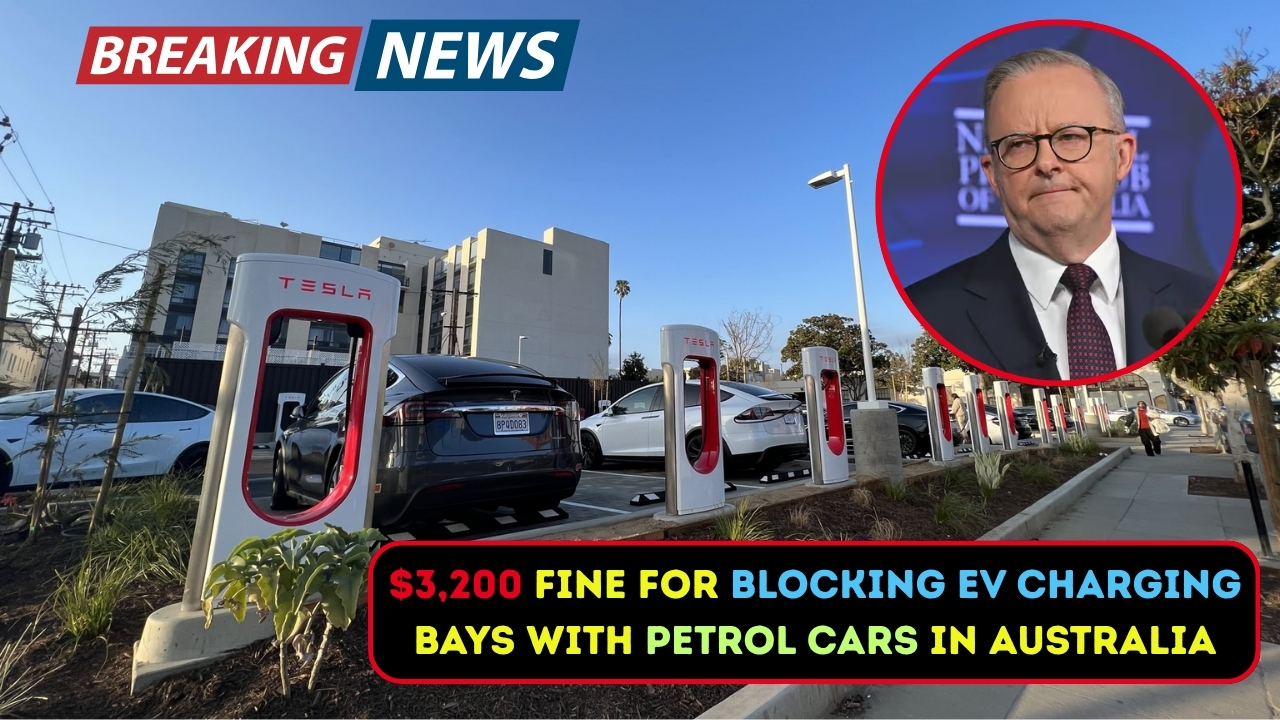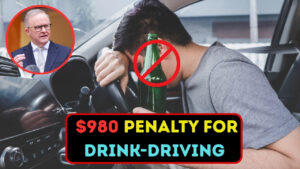Australia is quickly stepping into the electric vehicle (EV) era, but with that progress comes some new rules—and hefty penalties. One of the latest and most talked-about changes revolves around EV charging bays. If you’re someone who drives a petrol or diesel car and casually thinks, “Well, it’s just a parking spot, right?”—think again. Blocking an EV charging bay with a non-electric vehicle could now cost you up to $3,200.
Sounds harsh? Maybe. Necessary? Arguably, yes. Let’s break it down.
Why Are These Fines Being Introduced?
Honestly, the whole idea is simple: EV drivers need access to charging bays, not as a luxury, but as a necessity. Unlike petrol cars that can fill up in a couple of minutes at any servo, electric vehicles often need more time and specific charging points. When a petrol or diesel car—sometimes jokingly called an “ICE car” (short for internal combustion engine)—parks in those spots, it’s not just an inconvenience. It’s a roadblock, both literally and figuratively, for someone who might be low on charge.
On the flip side, some argue that not every charging bay is always occupied, and fines this steep feel like overkill. But to be fair, the government and local councils see it as the only way to make people take the rule seriously. A small slap on the wrist just doesn’t cut it.
How Much Could You Really Pay?
Depending on the state or territory, penalties for blocking EV bays vary, but the figure of $3,200 has become the upper benchmark. That’s not just pocket change—it’s a holiday, a new laptop, or frankly, a painful reminder not to misuse parking spaces.
Here’s the kicker: it’s not just for petrol cars. Even EV owners themselves can be fined if they’re parked in a charging bay without actually charging. Yep, that’s right. Using the space as free parking, even if you own an EV, is against the rules in several jurisdictions.
Enforcement – Is It Really Happening?
You might be thinking, “But who’s actually checking?” Fair question. Some councils are using rangers and parking inspectors, while shopping centres and charging station operators also keep a close eye. In busier cities like Sydney and Melbourne, inspectors are becoming stricter, especially as more EVs hit the road and demand for chargers grows.
Technology is helping too. Some charging providers share data with councils, showing when a car is plugged in or not. Cameras and number-plate recognition systems are also being trialled in certain areas. So yes, enforcement is very real.
Why It Matters for Everyday Drivers
For petrol and diesel car drivers, the lesson is straightforward: don’t touch EV charging bays unless you’re in an electric car and actually charging. Think of it like parking in a disabled bay without a permit—socially frowned upon and legally punishable.
For EV drivers, it’s also a nudge towards better etiquette. Don’t hog the charger after your battery is full, and don’t treat the bays as prime parking just because your car is electric.
This all ties into Australia’s bigger shift. The government is pushing EV adoption with subsidies, tax incentives, and stricter emissions targets. Naturally, charging infrastructure is a huge part of that puzzle. Without clear rules and real consequences, chaos would ensue at charging stations.
Public Reaction – Mixed, But Changing
Some people feel the $3,200 fine is extreme, especially in smaller towns where EV uptake is still low. Others welcome it, saying it’s about time the law caught up with the needs of the future. And honestly, both sides have a point.
Still, as EV sales continue to surge (more than doubling in the last couple of years), the demand for fair use of charging stations will only grow. Over time, the fines might even feel as normal as getting a ticket for overstaying in a regular parking spot.
Wrapping It Up
So, can you get fined $3,200 for blocking an EV charging bay with your petrol or diesel car in Australia? Absolutely. And it’s not just a hypothetical warning—it’s being enforced in real time.
The message is clear: respect the signs, respect the rules, and respect the fact that EV charging bays aren’t there for convenience—they’re essential for the drivers who rely on them.
And if you’re tempted to risk it for “just a quick stop”? Well, that quick stop could end up being the most expensive parking decision you ever make.
FAQs
Q1. Can petrol cars ever park in EV charging bays?
No. These bays are strictly reserved for electric vehicles that are actively charging.
Q2. What if I own an EV but don’t plug it in—can I still be fined?
Yes, fines apply if you’re parked in a charging bay without charging, even if you drive an EV.
Q3. Are the fines the same in every state?
Not exactly. They vary, but the maximum can reach up to $3,200 depending on local laws.
Q4. How are these fines enforced?
Through parking inspectors, council officers, and in some cases, camera or charging station monitoring systems.
Q5. Is this law new in 2025?
The rules began rolling out earlier, but in 2025, stricter enforcement and higher fines are being implemented across more regions.




